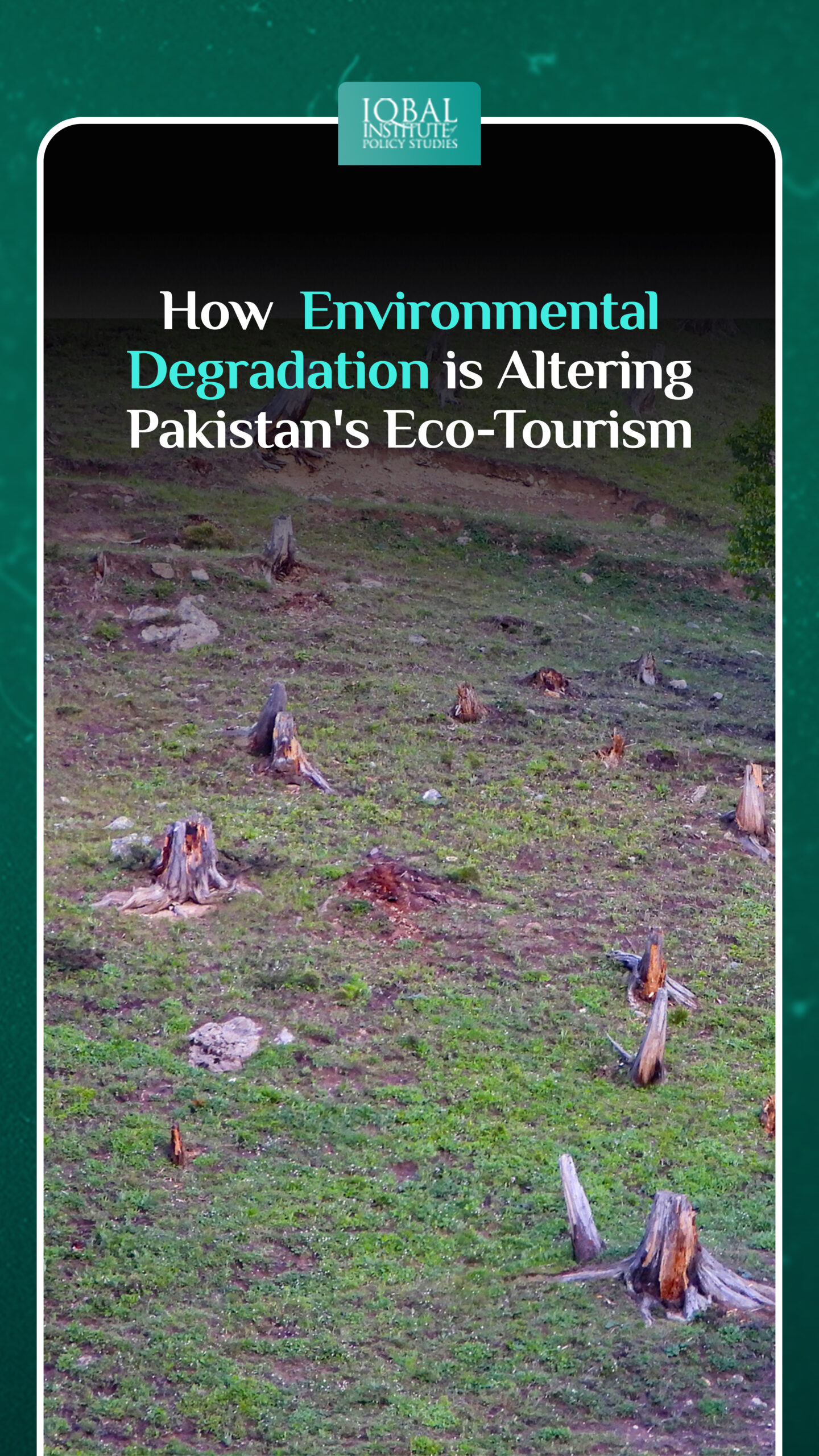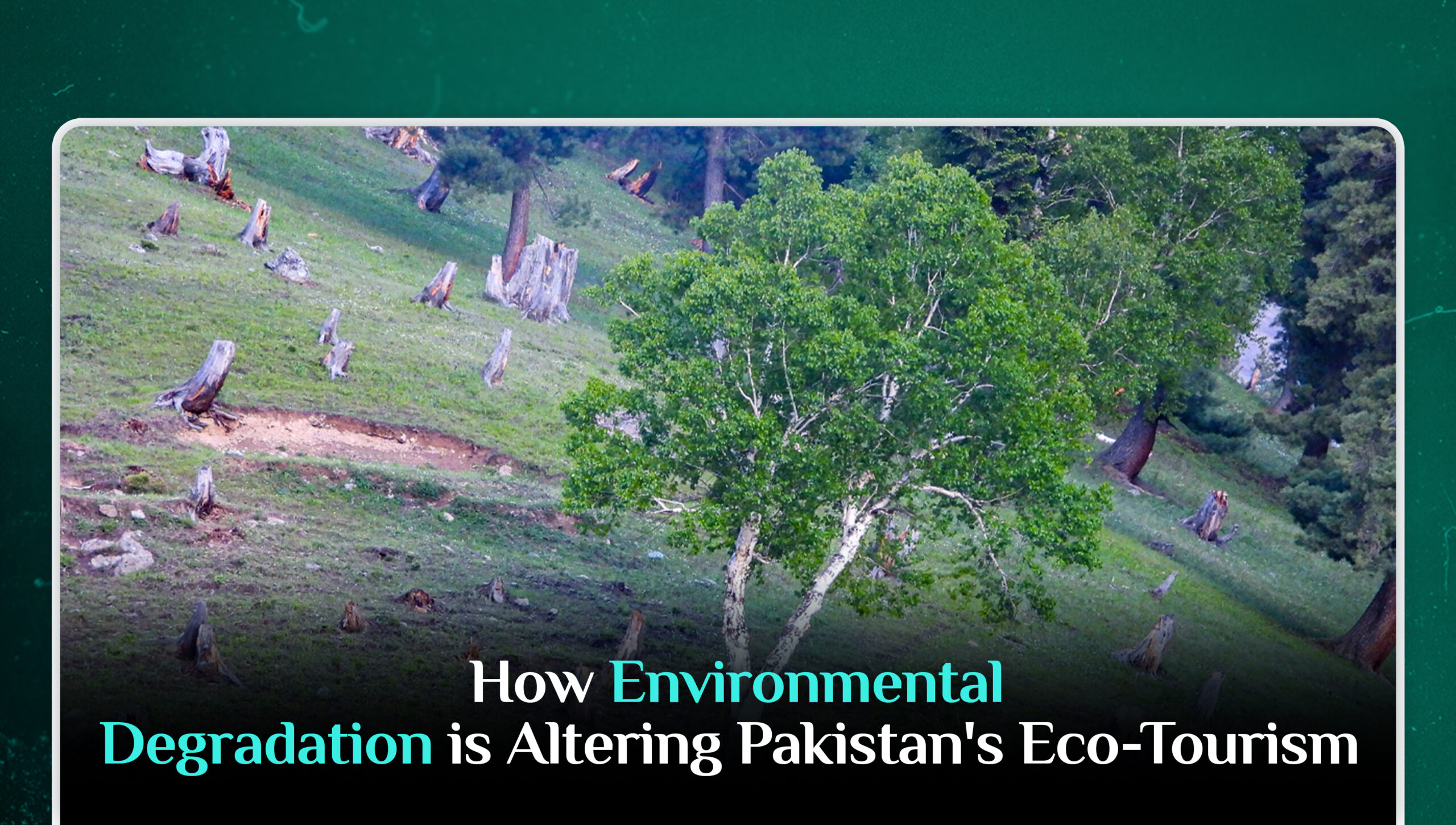Pakistan, a land of astounding natural beauty and diverse ecosystems, has the potential to be a global eco-tourism hub. From the majestic Karakoram Range to the verdant valleys of Swat and the pristine Arabian Sea coastline, Pakistan offers a wealth of natural treasures for travelers seeking unique and environmentally sustainable experiences. However, the relentless march of environmental degradation is transforming the country’s eco-tourism landscape. In this comprehensive blog, we will delve deep into the multifaceted ways in which environmental degradation is altering Pakistan’s eco-tourism sector and explore the detailed solutions needed to reverse the damage.
Deforestation and Loss of Biodiversity
Deforestation is among the most pressing issues affecting Pakistan’s eco-tourism. Forests are not just scenic attractions; they play a pivotal role in maintaining ecological balance, providing habitats for wildlife, and creating inviting environments for tourists. Yet, illegal logging, urban expansion, and land encroachments are rapidly diminishing Pakistan’s forests. This not only impacts the visual appeal of eco-tourism destinations but also significantly reduces the chances of wildlife encounters for tourists.
Solutions
Implement and enforce stringent anti-logging policies.
Promote large-scale reforestation and afforestation projects to counteract the loss of forests.
Foster community-based conservation initiatives that engage local populations in protecting and preserving forests.
Impact on Adventure Tourism
Pakistan’s northern regions, particularly Gilgit-Baltistan, have garnered international acclaim for adventure tourism. Activities such as mountaineering, trekking, and rock climbing have drawn adventurers from around the world. However, the melting glaciers in the Karakoram Range, primarily due to climate change, are reducing the scale and safety of these activities. As glaciers recede, the risk of avalanches and glacial lake outburst floods (GLOFs) increases, making adventure tourism a more hazardous pursuit.
Solutions
Raise awareness about the consequences of climate change on adventure tourism.
Promote responsible trekking and mountaineering practices.
Develop and implement early warning systems to mitigate the risks associated with glacial hazards.
Pollution and Water Contamination
Pollution, originating from industrial waste, agricultural runoff, and plastic litter, is contaminating water bodies across Pakistan. This not only disrupts aquatic ecosystems but also poses health risks to tourists participating in water-based activities like boating, swimming, and fishing. The unsightly sight of polluted rivers and lakes detracts from the overall experience and discourages eco-conscious travelers
Solutions
Enforce stringent regulations on industrial waste disposal and agricultural runoff.
Promote eco-friendly practices, such as waste recycling and responsible waste disposal.
Organize regular clean-up campaigns to remove plastic waste from natural habitats and raise environmental awareness among both tourists and local communities.
Climate Change and Unpredictable Weather Patterns
Pakistan’s eco-tourism relies heavily on its diverse climatic conditions, from the arid deserts of Sindh to the snow-clad peaks of the Himalayas. However, climate change is causing unpredictable and extreme weather patterns, making it challenging for tourists to plan their trips. Erratic rainfall can lead to floods and landslides, disrupting travel plans and causing safety concerns. Unpredictable weather patterns also pose a threat to agriculture and, subsequently, the livelihoods of local communities that depend on eco-tourism.
Solutions
Increase public awareness about the effects of climate change on tourism and the environment.
Promote responsible tourism practices to minimize carbon footprint and waste generation.
Develop adaptive strategies for eco-tourism in regions prone to climate-related risks, such as improved disaster management and weather forecasting.
Habitat Destruction and Infrastructure Development
To accommodate the growing number of tourists, many areas are witnessing habitat destruction and excessive infrastructure development. This not only threatens the natural beauty of these areas but also disrupts the habitats of local wildlife. The construction of hotels, roads, and other facilities often leads to deforestation, soil erosion, and habitat fragmentation, jeopardizing the very ecosystems that make these destinations appealing.
Solutions
Enforce stricter environmental impact assessments and sustainability guidelines before granting permits for infrastructure development.
Limit the number of accommodations in ecologically sensitive ecosystems to prevent habitat destruction.
Encourage the use of eco-friendly building materials and energy-efficient technologies in tourism infrastructure.
Community Engagement
Engaging local communities is vital in preserving the natural beauty and ecosystem integrity of eco-tourism destinations. When local populations understand the importance of conservation and derive economic benefits from eco-tourism, they become stewards of their environment.
Solutions
Involve local communities in eco-tourism initiatives to ensure their economic benefit and participation.
Train and empower locals as tour guides, wildlife protectors, and conservation advocates.
Raise awareness among the community about the significance of preserving their natural surroundings for future generations.
Conclusion
While environmental degradation is undeniably altering Pakistan’s eco-tourism landscape, there is still hope for a sustainable and thriving eco-tourism industry in the country. Through a holistic approach that involves reforestation, climate change mitigation, pollution control, sustainable infrastructure development, and community engagement, Pakistan can harness its natural beauty, protect its precious ecosystems, and contribute to global conservation efforts. By addressing these issues comprehensively, Pakistan can not only attract more tourists but also ensure the long-term preservation of its stunning natural heritage. As the world looks to reconcile tourism and environmental sustainability, Pakistan can set an inspiring example for others to follow.
This article is written by Radma Nouman. Radma is a research analyst at the Iqbal Institute of Policy Studies (IIPS).



Leave a Reply